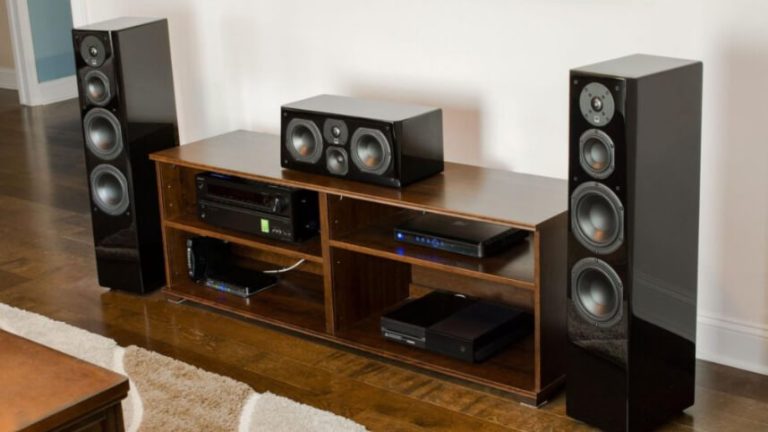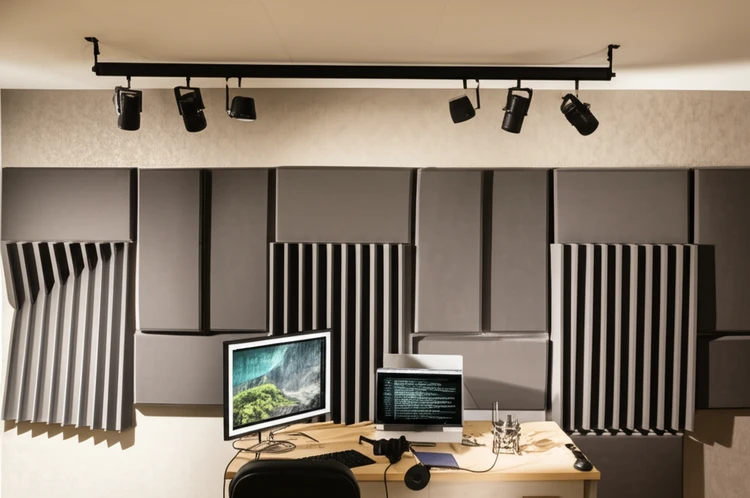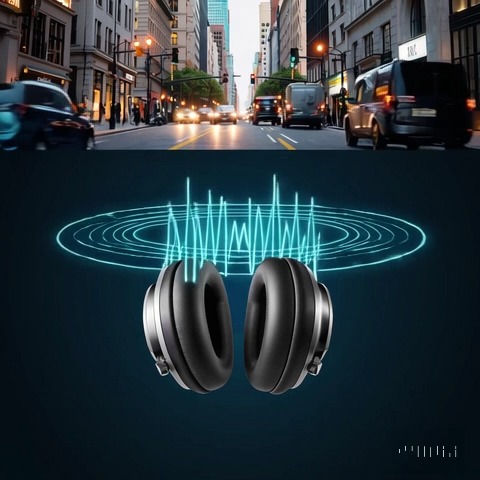
The roar of a live concert pulses through your chest. The crowd cheers, lights flash, and the energy is electric. But as a sound engineer, you feel a knot in your stomach. Are the sound levels safe? Are you complying with noise laws? Could the noise leak outside, upsetting neighbors? A reliable dB meter for live sound becomes your lifeline.
This article dives into finding the best dB meter to keep your shows safe and soundproofing effective. From understanding their role to picking the right one, you’ll learn what matters most.
Sound levels aren’t just about volume they affect hearing, compliance, and audience comfort. Let’s explore how the right tool can make your live events unforgettable for all the right reasons.
The Role of Decibel Meters in Live Sound and Soundproofing
The first time I worked a festival, I underestimated noise. The music was incredible, but complaints poured in from nearby residents. I learned fast: controlling sound isn’t just about the mix it’s about safety and respect. A dB meter measures sound pressure levels (SPL), which tell you how loud your event is. This helps protect everyone’s hearing and ensures you follow noise laws.
In live settings, sound can spike suddenly. A dB meter gives real-time feedback, letting you adjust levels before they harm ears or break rules. For soundproofing, these tools are gold. They measure how much noise escapes your venue, showing if your acoustic panels or barriers work.
If levels outside are high, you know your soundproofing needs a boost. Meters also help meet OSHA standards, keeping exposure below 85 dBA for long events. With a good meter, you’re not guessing you’re in control, creating safer, better shows.
Key Considerations for Selecting the Best dB Meter for Live Sound
Choosing a dB meter feels overwhelming with so many options. But focusing on a few key factors makes it simple. Let’s break it down.
Accuracy and Compliance
Accuracy is everything. A meter that’s off by a few decibels could lead to fines or unsafe conditions. Class 1 meters, like the Svantek TopTes TS-501B, are super precise and meet Tadeto portable meters. They’re perfect for big venues or legal reports. Class 2 meters work for smaller gigs but might not cut it for official compliance.
I once borrowed a cheap meter for a club show. It gave inconsistent readings, and I stressed all night. Investing in a reliable meter saves headaches and builds trust with venues and regulators.
Features for Live Sound
Live events are chaotic. You need a meter that keeps up. Real-time monitoring with a clear display helps you spot spikes instantly. Data logging saves sound levels over time, great for proving compliance or checking soundproofing. Look for A-weighting for human hearing and C-weighting for loud peaks, like bass drops.
A friend swore by his meter’s remote mic input. He placed it near the crowd while adjusting from the booth genius for big venues.
Portability and Usability
You’re lugging gear all day, so pick a lightweight, battery-powered meter. A backlit screen is a lifesaver in dark venues. Some meters, like the TopTes TS-501B, are compact but still pack features like data logging.
I learned this the hard way at an outdoor gig. My bulky meter died mid-show no outlets, no backup. Now, I always check battery life and size.
Top Decibel Meters for Live Sound in 2025
Picking the right dB meter depends on your gigs and budget. Here are some top choices for 2025, based on real-world performance and soundproofing needs.
TopTes TS-501B Decibel Meter

As a sound engineer working with live events, I’ve seen how overwhelming noise can be, especially for autistic individuals sensitive to sound. My cousin, who’s on the spectrum, struggled at concerts until we started using the TopTes TS-501B Decibel Meter to monitor sound levels. It’s been a game-changer for creating safer, more comfortable environments.
This compact device fits easily in my hand, and its clear 2.25-inch backlit LCD screen makes reading levels simple, even in dim venues. Whether I’m checking ambient noise or loud music, it’s accurate within 1.5 dB, helping me ensure sound stays within safe limits.
The A/C weighting options let me tailor measurements for human hearing or peak sounds, perfect for dynamic settings. I love the MAX/MIN feature it shows the highest and lowest levels, so I can adjust audio or soundproofing on the spot.
- Precise Measurements: Captures sound from 30-130 dB with ±1.5 dB accuracy, ideal for monitoring safe levels.
- Clear Display: 2.25-inch backlit LCD screen ensures easy reading in low-light settings.
- A/C Weighting: Switches between A-weighting for human hearing and C-weighting for loud peaks.
- MAX/MIN Tracking: Records highest and lowest sound levels for quick adjustments.
- Portable Design: Lightweight, battery-powered with a non-slip grip for easy handling.
Tadeto Digital Sound Level Meter

As an sound-audio engineer, I’ve felt the pressure of keeping sound levels safe, especially for autistic individuals who find loud noises overwhelming. My friend’s daughter, who’s on the spectrum, used to dread school events until we brought the Tadeto Digital Sound Level Meter to monitor noise.
This lightweight device fits in pocket, and its backlit LCD display makes checking levels a breeze, even in dim auditoriums. With a range of 30 to 130 dB and ±2.0 dB accuracy, it helps me ensure the environment stays comfortable and safe.
The A/C weighting options let me measure ambient noise or loud equipment, while the fast/slow response settings adapt to changing sound levels. Whether I’m at a concert or a quiet classroom, this meter gives me confidence to create autism-friendly spaces. It’s simple, reliable, and a lifesaver for keeping noise in check.
- Accurate Readings: Measures 30-130 dB with ±2.0 dB accuracy for reliable sound monitoring.
- Clear Display: 4-digit LCD with backlight ensures easy reading in any lighting.
- A/C Weighting: Switches between A-weighting for ambient noise and C-weighting for loud sounds.
- Fast/Slow Modes: Adapts to stable or fluctuating noise with 0.125s or 1s response rates.
- Portable Design: Lightweight and easy to carry for use in schools, homes, or events.
RISEPRO® Digital Sound Level Meter HT-80A

Running sound for live gigs, I’ve learned how vital it is to keep noise at safe levels for everyone in the venue. My cousin, a club owner, borrowed my RISEPRO Digital Sound Level Meter HT-80A to check sound levels during a packed concert, and it was a lifesaver.
This pocket-sized device is super easy to carry, and its backlit screen lights up clearly, even in dark booths. It measures 30 to 130 dB with ±1.5 dB accuracy, helping us adjust speakers to avoid overwhelming the crowd or breaking noise rules.
The MAX/MIN feature shows the loudest and quietest moments, perfect for tweaking sound on the fly. Though it uses batteries quickly, it’s reliable for ensuring safe, enjoyable shows and checking soundproofing. This meter gives us confidence to create better live sound experiences.
- Accurate Sound Tracking: Measures 30-130 dB with ±1.5 dB accuracy for reliable results.
- Easy-to-Read Display: Backlit screen ensures clear readings in low light.
- MAX/MIN Recording: Captures highest and lowest noise levels for quick adjustments.
- User-Friendly Features: Includes data hold and auto power-off for simple operation.
- Portable and Stylish: Lightweight with a carrying pouch and premium gift box.
TestHelper SW-525A Sound Level Meter

Managing sound at live events is a balancing act, and I’ve felt the pressure to keep levels safe for audiences and crew. My friend, who runs a small music venue, recently mounted the TestHelper SW-525A Sound Level Meter on the wall to monitor noise during shows.
Its large red LCD display is a standout, letting us check levels from across the room, even in dim lighting. Measuring 30 to 130 dB, it catches every sound spike, helping us adjust speakers to protect hearing and meet noise rules. The alarm feature buzzes when things get too loud, giving us peace of mind.
Powered by a USB-C cable, it’s easy to set up and stays reliable all night. This meter has made our gigs safer and helped us fine-tune soundproofing, ensuring everyone enjoys the music without complaints from neighbors.
- Vivid Display: Large red LCD screen is clear and readable from far away.
- Broad Range: Tracks 30-130 dB to handle quiet and loud sounds.
- Quick Updates: Refreshes every second to catch sudden noise changes.
- Safety Alarm: Alerts when sound goes over your set limit.
- Simple Setup: Wall-mountable with USB-C power for steady performance.
Extech 407730 Digital Sound Level Meter

For live sound engineers, the Extech 407730 Digital Sound Level Meter is a reliable tool to ensure safe and balanced audio at concerts and events. This compact device measures 40 to 130 dB with 2 dB accuracy, making it easy to monitor noise levels and protect audiences from excessive sound.
Its fast-responding bar graph shows changes instantly, helping you adjust speakers on the spot. The MAX/MIN function tracks the loudest and quietest moments, perfect for fine-tuning sound or checking soundproofing. With a clear display and simple controls, it’s built for busy venues, giving you confidence to create enjoyable, compliant live sound experiences.
- Wide Range: Measures 40-130 dB to cover all live sound scenarios.
- Accurate Results: Offers 2 dB accuracy with 0.1 dB resolution.
- Real-Time Bar Graph: Displays sound changes quickly for fast adjustments.
- MAX/MIN Tracking: Records highest and lowest levels for easy monitoring.
- Easy to Use: Lightweight with auto power-off for hassle-free operation.
Practical Tips for Using dB Meters in Live Sound and Soundproofing
Using a dB meter effectively takes practice. My first gig with one was a mess I placed it too close to the speakers and got skewed readings. Here’s what I’ve learned.
Calibrate regularly. Meters drift over time, so check them before big events. A calibrated meter ensures accurate data, especially for compliance. Place it smartly. Set the meter at audience ear level, about 5–6 feet high, to measure what people hear. For soundproofing, place it outside the venue to check noise leakage.
Read the data right. If outdoor levels drop by 20 dB after adding acoustic panels, your soundproofing is working. Use logged data to spot trends, like when levels spike during encores. Pair meter readings with actions, like offering earplugs or upgrading barriers.
Last summer, I used a meter to prove our soundproofing kept noise below city limits. The data saved us from a fine. Learn your meter, and it’ll be your best ally.
FAQ
What’s the difference between Class 1 and Class 2 dB meters for live sound?
Class 1 meters are more accurate and cover a wider frequency range, making them ideal for professional venues and legal compliance. Class 2 meters are less precise but work for smaller gigs or casual monitoring. For soundproofing or official reports, stick with Class 1 to avoid errors.
Can smartphone apps replace professional dB meters?
Apps like NIOSH SLM are handy for quick checks, but they’re less accurate than professional meters. They’re great for small events or personal use but don’t rely on them for legal compliance or soundproofing assessments. A dedicated meter is worth the investment for serious needs.
How do dB meters help with soundproofing in live venues?
dB meters measure noise escaping your venue, showing if soundproofing like acoustic panels works. Lower outdoor readings mean better isolation. They also help ensure you meet local noise laws, keeping neighbors happy and avoiding fines. Regular checks improve your setup over time.
What features are essential for live sound dB meters?
Look for real-time monitoring, data logging, and A/C-weighting. Real-time feedback catches sudden spikes, while logging helps with compliance or soundproofing reports. A/C-weighting matches human hearing and loud peaks. Portability and a clear display are also key for busy gigs.
How often should I calibrate my dB meter?
Calibrate before major events or at least once a year. Regular calibration keeps readings accurate, especially for legal or compliance purposes. An uncalibrated meter can give false data, risking fines or unsafe sound levels. Check the manual for specific steps.
Conclusion
A dB meter is more than a gadget it’s your partner in creating safe, compliant, and unforgettable live sound experiences. From ensuring hearing safety to validating soundproofing, the right meter makes all the difference. Choose one with the accuracy, features, and portability your gigs demand. Calibrate it, place it wisely, and use its data to improve your events.
Explore options like the TopTes TS-501B or Extech 407730, and start small if you’re on a budget. Visit OSHA’s noise guidelines for more on safe sound levels. What’s your next step? Pick a meter, test it at your next show, and share your results with us!






